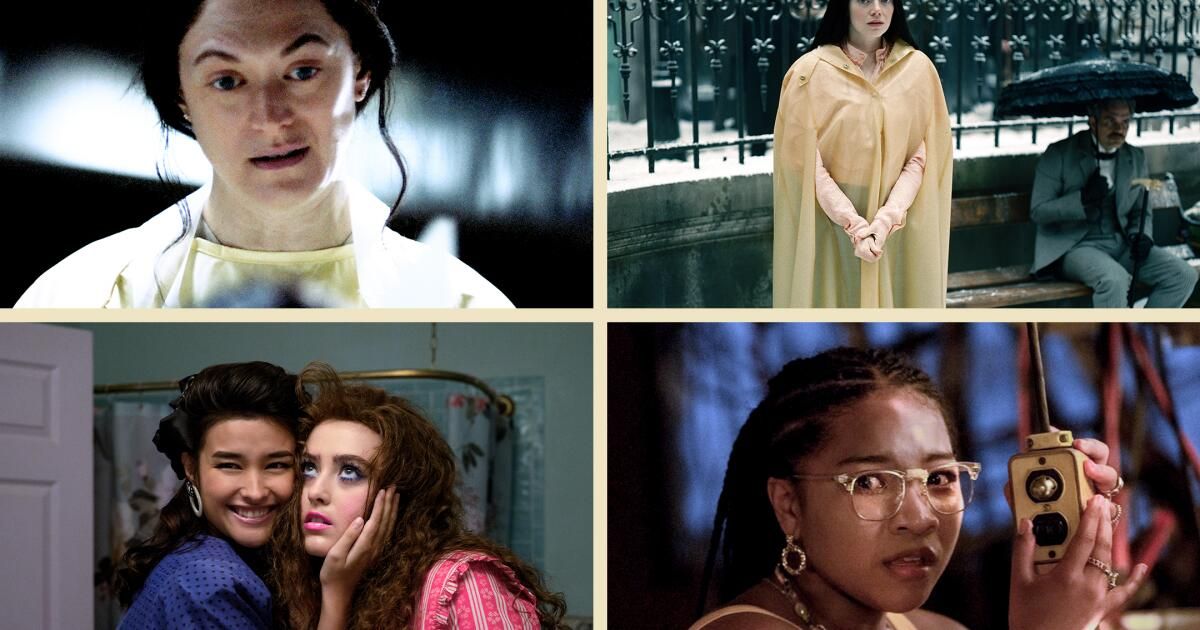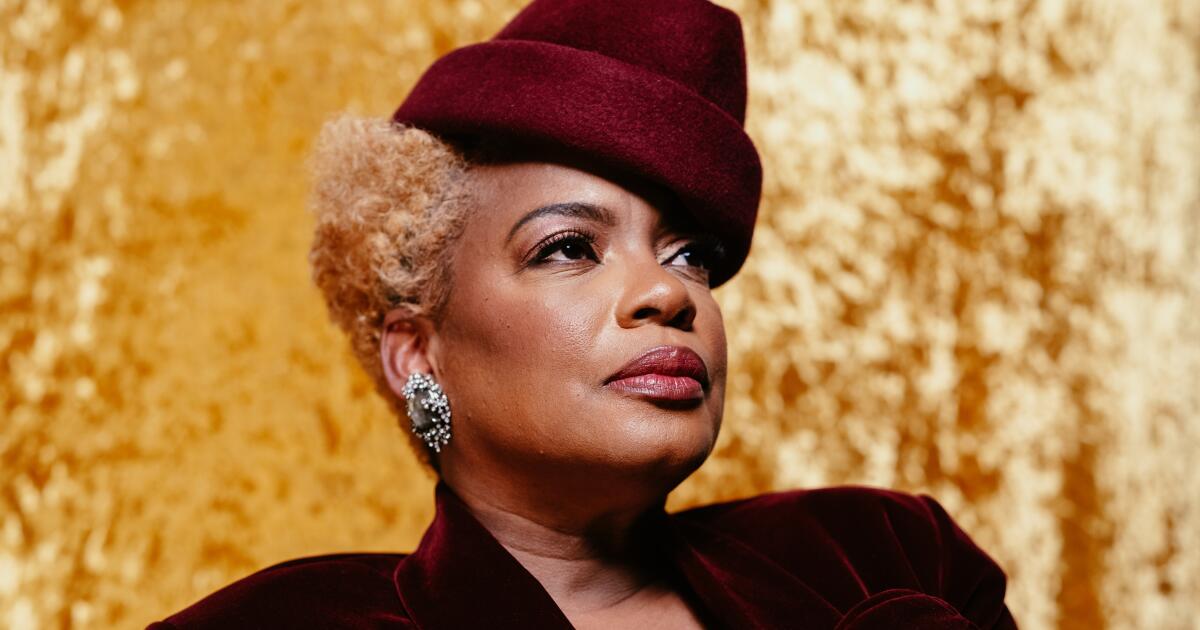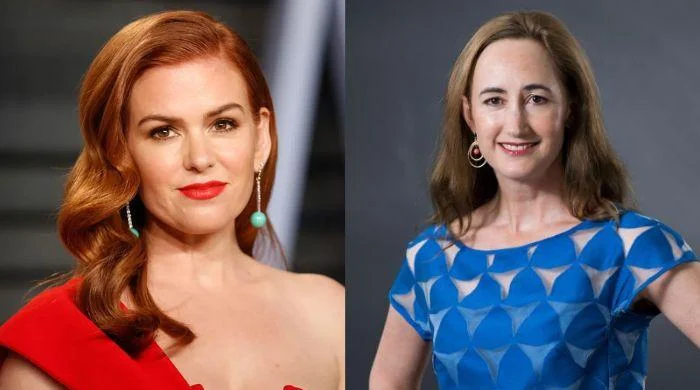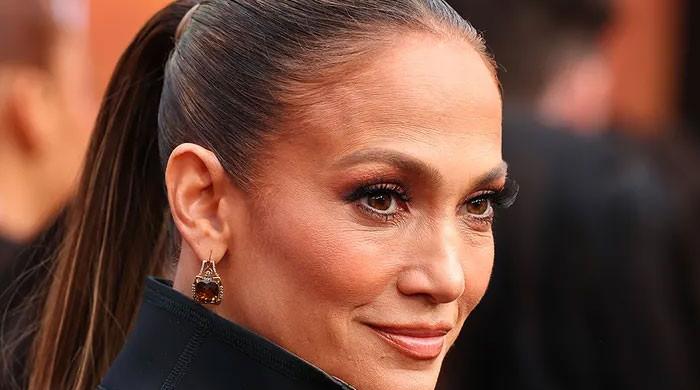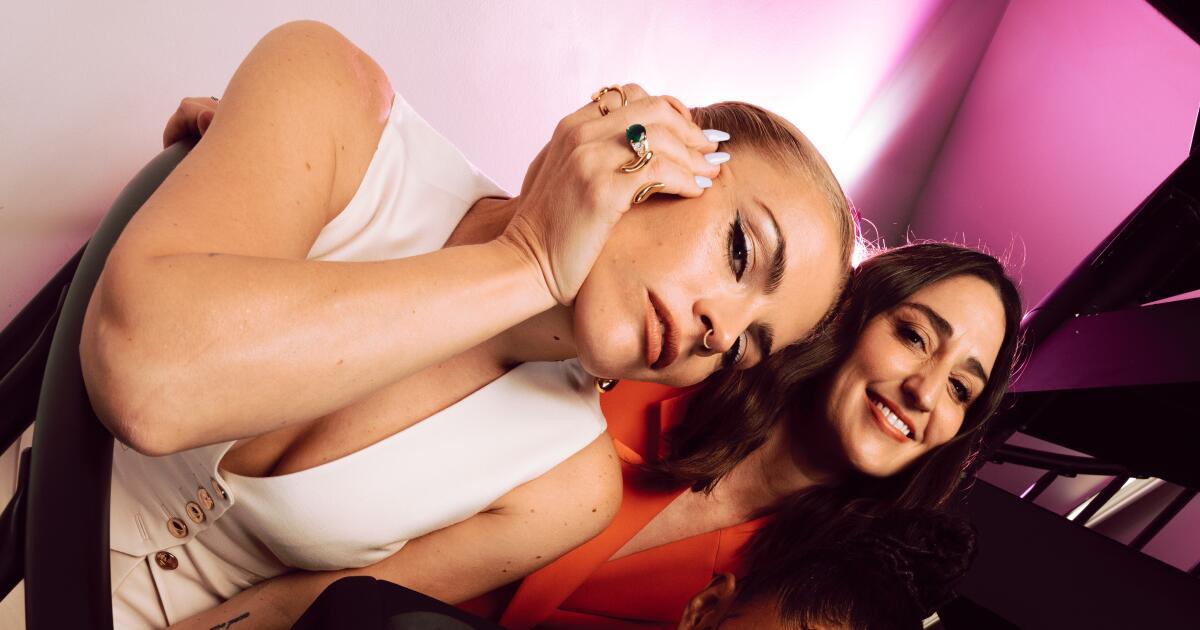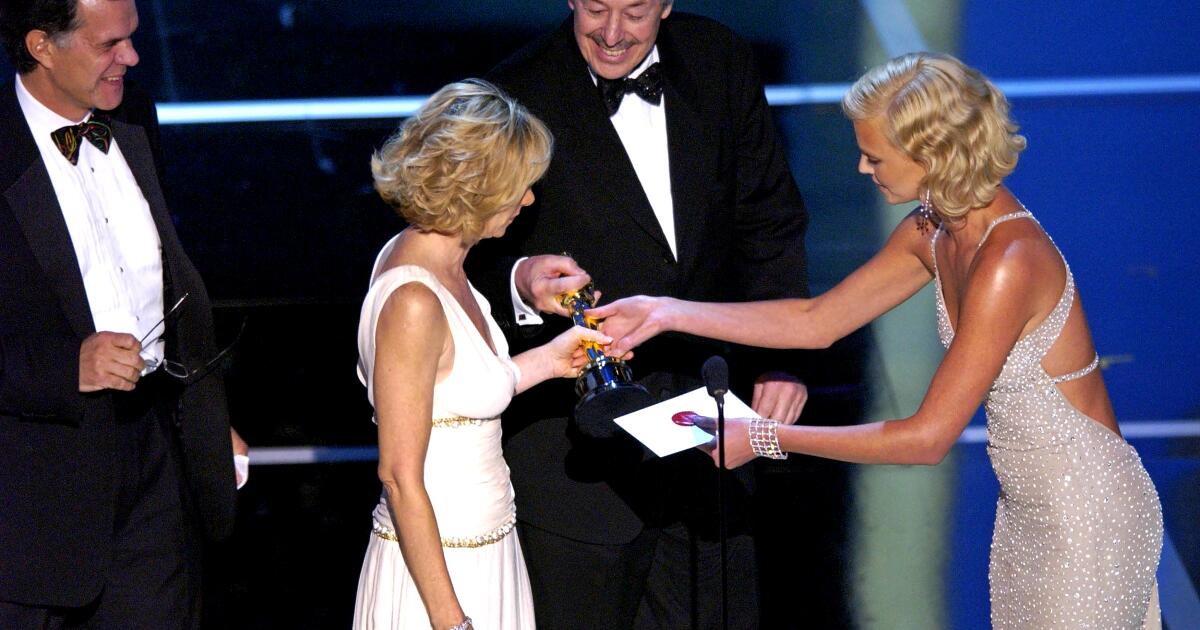Screenwriter Diablo Cody has been in Hollywood long enough not to believe in coincidences.
“Not to surprise me, but having worked in this industry for 20 years, I think there's a collective creative consciousness because I've seen this happen so many times where suddenly a bunch of similar projects pop up,” he says. . “None of that was intentional, but there's a vibe.”
That vibe could be competing asteroid movies (“Armageddon” and “Deep Impact,” both 1998) or, indeed, competing volcano movies (“Volcano” and “Dante's Peak” in 1997). But right now, the idea in the ether is Frankenstein. Specifically, Frankenstein with a female bent.
In Cody's case the movie is “Lisa Frankenstein,”a horror comedy set in the 1980s in which a lonely teenager, Lisa (Kathryn Newton), comes face to face with the reanimated corpse of a 19th century dreamer (Cole Sprouse) with whom she has been obsessed in the local cemetery. He needs body parts and she can help him get them, bringing him back to life with the electrifying tanning bed in her garage. Director Zelda Williams calls Lisa's creature hers “Mr. Darcy's own personal violent zombie.”
And that's just the latest example. There's also the Oscar-nominated “Poor Things,” based on Alisdair Gray's novel in which the creature, not the creator, is a woman named Bella Baxter (Emma Stone), a former suicide victim revived with the brain of her unborn child.
On top of that, last year we saw the release of two indies with similar themes. There's filmmaker Laura Moss's “Birth/Rebirth,” in which a nasty, antisocial morgue technician, Rose (Marin Ireland), obsessed with bringing the dead back to life, steals a young girl's corpse only to keep her. Her mother, a nurse (Judy Reyes), joins her in raising the undead. Meanwhile, Bomani J. Story's “The Angry Black Girl and Her Monster” finds a teenage heroine (Laya DeLeon Hayes), frustrated by the violence in her community, bringing her murdered brother back to life through the technology she assembled behind a door that says “Condemned: Extreme Electrical Hazard.”
After all that, the trend won't stop: “The Lost Daughter” director Maggie Gyllenhaal is supposedly addressing a rethinking of “The Bride of Frankenstein” for Warner Bros. with Jessie Buckley and Christian Bale. (Gyllenhaal was not available for comment.)
So why is Frankenstein in fashion? “I think the time has come,” Cody offers, adding that right now, the female voices who have longed to tell these stories have more power to do so. “For example, why don't we have Frankenstein stories from the female perspective? “It may be necessary to untie them all and I will see them all.”
Director Moss has a slightly opposite reading of the confluence of films. “Everyone feels like they're using the Frankenstein mythology to explore different themes, so I'm not sure it has to do with a broader social moment of Frankenstein, but rather a really strong myth,” Moss says.
Judy Reyes, right, and Marin Ireland in the film “Birth/Rebirth.”
(Shudder)
And, of course, that myth originated with a woman, Mary Shelley, who, at age 18, first wrote the story of Victor Frankenstein and his creature when Lord Byron asked her, during a rainy spell in the outback, to invent a “ghost story”. .” Both Story and Moss began to build their films out of a deep personal interest in Shelley. Story calls Shelley the “queen,” and her inspiration for the character of Vicaria, who people in her neighborhood call a “mad scientist,” came from multiple sources, including Shelley, her own sisters, and black women she saw organizing in Black Lives Matter. movement and legendary activists like Angela Davis and Tamika Mallory.
Moss explains that her protagonist Rose, who conducts reanimation experiments in her gloomy New York City apartment, was imagined as a “fusion” of Shelley and Shelley's creation on the page, Dr. Victor Frankenstein.
In the years since Shelley's novel “Frankenstein” was first published in 1818, the text has been remixed countless times, especially for the screen, from James Whale's indelible 1931 feature film starring Boris Karloff to “Frankenhooker ” 1990 exploitation comedy about a man who uses prostitutes' body parts to revive his dead wife. It's a film Williams reviewed when he put together “Lisa Frankenstein.”
“Because we've lived with it for so long, it becomes a little bit easier to start changing it,” says Kieran Foster, an academic at the University of Nottingham in England who has studied the Hammer Studio's Frankenstein films. “The rich metaphors that [Shelley is] “Using in their original story about man and God, creation and evolution, they're pretty radical at the time, so you end up with a kind of compelling premise that's actually allegorical and tells a much broader epic scope.”
If “Frankenstein” was originally a story about a man playing God, written by a woman, it becomes a little more complicated when it is introduced to a person who is naturally capable of conceiving of life without the use of chains, pulleys and spokes. . And while, as Moss says, all of these new twists on “Frankenstein” use the central ideas to tell multiple narratives, they all, to some degree, address different questions of bodily autonomy.
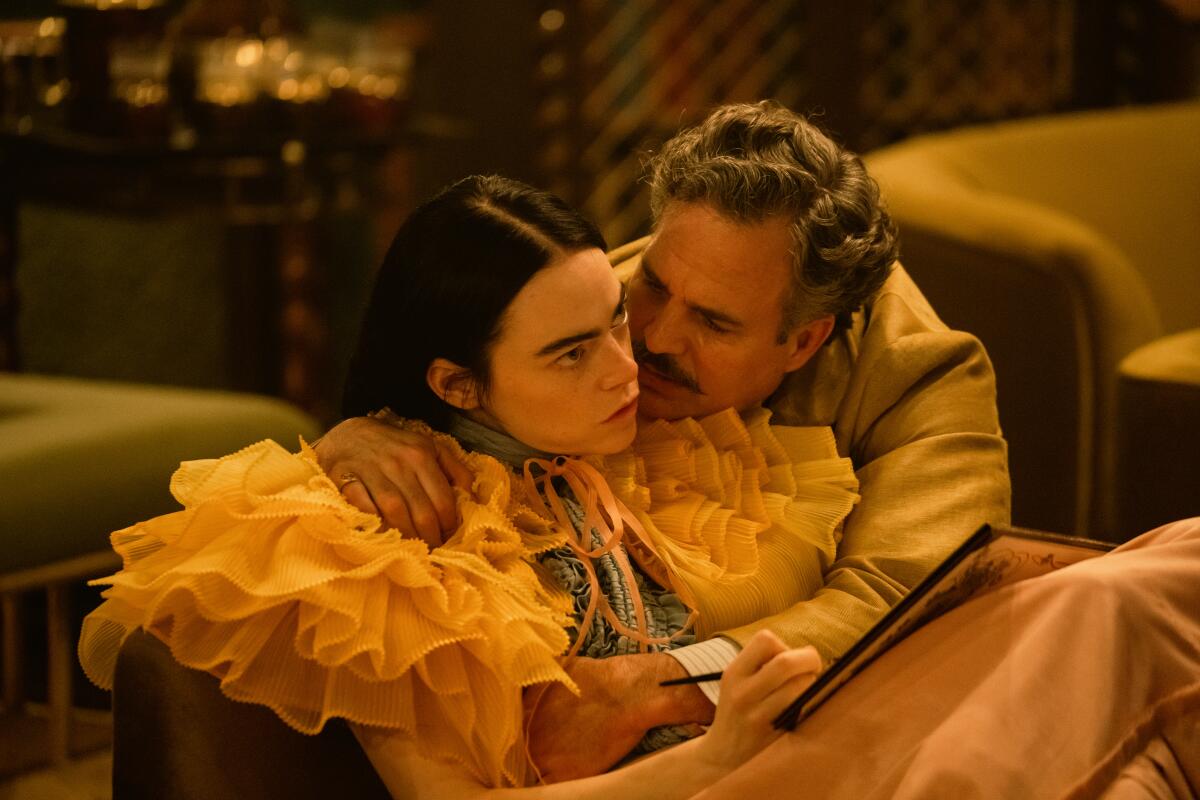
Emma Stone and Mark Ruffalo in the movie “Poor Things.”
(Atsushi Nishijima/Searchlight Images)
In “Poor Things,” directed by Yorgos Lanthimos and adapted by Tony McNamara, there is a male creator (Willem Dafoe) named Godwin (Shelley's maiden name, but called “God” in the film) who believes he can contain Bella. . Instead, Bella takes control of her body through a series of sexual adventures and eventually she feels more at home in an operating room and becomes a scientist by the end of the film.
Moss’ “Birth/Rebirth” takes her exploration of a woman’s body to an even darker place. Rose furthers her scientific work through self-induced miscarriages, a nod to Shelley's own history with prenatal complications. (Author Jill Lepore he once wrote in the New Yorker: “'Frankenstein' is four stories in one: an allegory, a fable, an epistolary novel and an autobiography, a chaos of literary fertility that left its young author struggling to explain her 'hideous progeny'”).
“When I started seriously exploring that concept of gender swapping, it became obvious to me that if you have a character with a uterus, it would be a shame not to address how that might influence her science and her creation,” Moss said. says. “As I, in my 20s and 30s, went through my own gender journey, I think it's really interesting now to think about gender as a construct and maybe all of us as monsters constructed according to rigid gender norms. What is the creature? Who is the monster? “These are really fundamental questions that I think can be addressed in many different directions.”
“Lisa Frankenstein,” on the surface, is a much sillier take on the source material, but there are similar (and equally serious) themes running through it.
Initially, Cody heard that Universal was looking for a new “Bride of Frankenstein.” “I sat down and wrote basically the entire outline for this movie and quickly realized it's not Universal's 'Bride of Frankenstein,'” he says. “This is like my own weird reinterpretation of that mythology.”
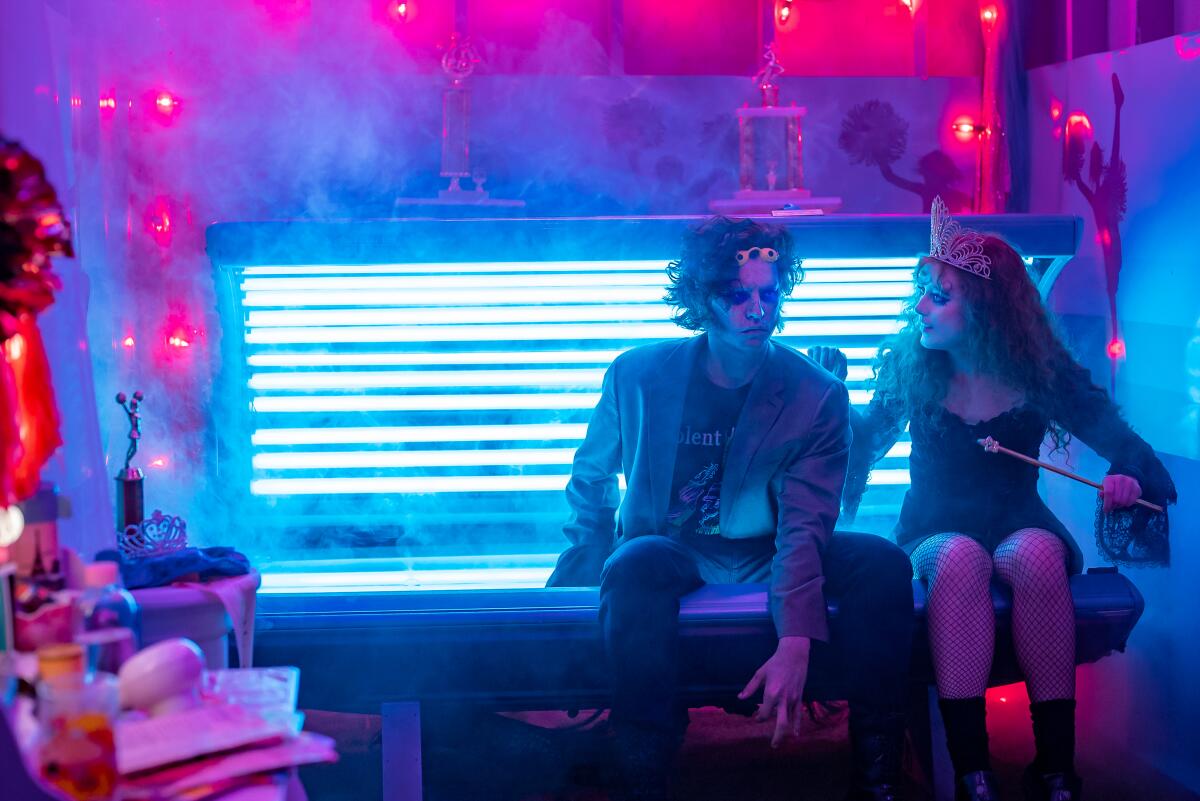
Cole Sprouse and Kathryn Newton in the movie “Lisa Frankenstein.”
(Michele K. Corto / Focus Features)
While Cody was a fan of Whale's “Bride of Frankenstein,” she was also inspired by John Hughes' 1985 comedy “Weird Science,” about idiots who build the girl of their dreams. Cody's beautiful creature was inspired less by Boris Karloff and more by “growing up madly in love with 'Edward Scissorhands,'” specifically Johnny Depp's solitary hero. Cody, who won an Oscar for 2007's “Juno,” was also eager to embark on another paranormal project thanks to the critical revival of “Jennifer's Body,” his 2009 teen possession script directed by Karyn Kusama.
And yet, at the same time, Lisa is a girl dealing with extreme grief following the gruesome murder of her mother and, in an early scene, being sexually assaulted by a classmate. She and the Creature eventually conspire to cut off that attacker's hand and replace a decaying limb. “The emotional key to the story was realizing that she's not creating simply for the sake of creation or because she has a god complex or something,” Cody says. “She is repurposing these parts in a way that makes sense to her and heals her.”
Cody admits that Lisa herself is not the nicest person. She has the egocentrism of many who interfere with the natural order of things and ignores some of the Creature's own needs to use it for her benefit. But he's also processing her sadness. “She's about a woman learning to deal with pain at the core of her, something I know very well,” says Williams, who addressed that issue very publicly after the death of her father, Robin Williams.
And Lisa is allowed to be something of a monster as she overcomes that all-consuming pain. Wearing black lace and red lipstick, she embarks on a mission to not only take down those who wronged her, but also to lose her virginity. “It was more about her reaching a more monstrous version of herself, but in the search for autonomy, confidence and outward expression of pain,” Williams explains.
Pain also hangs over “The Angry Black Girl and Her Monster.” Vicaria's experiment is a response to the death of both her mother and her brother. She is also there in “birth/rebirth.” Judy Reyes' grieving mother Celie participates in Rose's work to help keep her daughter Lila (AJ Lister) alive.
And it is there, of course, also in the original text, if not in some of the other film interpretations. In Shelley's version, Victor is mourning his mother when she begins her experiment, and he describes that grief in vivid detail. “When the passage of time demonstrates the reality of evil,” she says in the book, “then the true bitterness of pain begins.” Victor continues to deal with the loss as his monster takes revenge by killing his loved ones.
Maybe it's proof that everything old is new again. Or that these adventurous filmmakers are reinventing “Frankenstein” by returning it to its roots. These monsters and creators may wear skirts and have ovaries, but they're not that far removed from their literary ancestors. In a way, they are reclaiming Shelley's creation myth for women, allowing them to be mad geniuses (with the connotations, good and bad, that would imply) whether they are mothers, loners, or teenagers with tanning beds.

